Powershell Create Folder If Not Exist
Checking if a folder exists:
Before creating a folder, it is a good practice to check if it already exists. This can be done using the Test-Path cmdlet, which tests whether a path or file exists. To check if a folder exists, we can specify the path to the folder and use the Test-Path cmdlet. Here’s an example:
“`powershell
$folderPath = “C:\ExampleFolder”
if (Test-Path -Path $folderPath) {
Write-Host “Folder already exists”
} else {
Write-Host “Folder does not exist”
}
“`
In the above example, we set the variable `$folderPath` to the path of the folder we want to check. We then use the `Test-Path` cmdlet inside an `if` statement to determine if the folder exists or not. If the condition evaluates to true, we display the message “Folder already exists”, otherwise, we display “Folder does not exist”.
Using the If statement to create a folder if it does not exist:
Now that we know how to check if a folder exists, we can use the `If` statement to create the folder if it does not exist. Here’s an example:
“`powershell
$folderPath = “C:\ExampleFolder”
if (!(Test-Path -Path $folderPath)) {
New-Item -ItemType Directory -Path $folderPath
Write-Host “Folder created successfully”
} else {
Write-Host “Folder already exists”
}
“`
In this example, we again use the `Test-Path` cmdlet to check if the folder exists. However, we negate the condition using the `!` operator to check if the folder does not exist. If the condition evaluates to true, we use the `New-Item` cmdlet to create the folder with the specified path. We then display the message “Folder created successfully”. If the folder already exists, we display “Folder already exists”.
Understanding the syntax of the If statement:
The `If` statement in PowerShell follows a specific syntax. It starts with the `if` keyword, followed by a condition enclosed in parentheses. The code block to be executed if the condition evaluates to true is enclosed in curly braces `{}`. Optionally, an `else` block can be added to specify code to be executed when the condition is false. Here’s the general syntax:
“`powershell
if (condition) {
# Code to be executed if condition is true
} else {
# Code to be executed if condition is false
}
“`
Creating a new folder using the New-Item cmdlet:
To create a new folder in PowerShell, we can use the `New-Item` cmdlet with the `-ItemType` parameter set to “Directory”. We specify the path and name of the new folder using the `-Path` parameter. Here’s an example:
“`powershell
New-Item -ItemType Directory -Path “C:\NewFolder”
“`
In this example, we use the `New-Item` cmdlet to create a new folder named “NewFolder” in the root of the C drive (`C:\`).
Adding logic to the script to create the folder only if it does not exist:
To create a folder only if it does not exist, we can combine the `Test-Path` and `New-Item` cmdlets inside an `if` statement, as shown in the previous examples. By checking if the folder exists before creating it, we avoid creating duplicate folders and overwriting existing ones.
Handling exceptions and errors when creating folders:
When creating folders, it is important to handle exceptions and errors that may occur. PowerShell provides several mechanisms to handle errors, such as Try-Catch blocks and the ErrorAction parameter.
Using Try-Catch blocks to catch and handle errors:
A Try-Catch block allows us to catch and handle exceptions that occur within a specific block of code. To handle exceptions when creating folders, we can wrap the `New-Item` cmdlet inside a Try block and specify a Catch block to handle any exceptions that occur. Here’s an example:
“`powershell
try {
New-Item -ItemType Directory -Path “C:\ExistingFolder”
Write-Host “Folder created successfully”
} catch {
Write-Host “An error occurred while creating the folder: $_.Exception”
}
“`
In this example, we use the `try` keyword to start the Try block, followed by the code that may throw an exception. If an exception is thrown, the code inside the Catch block is executed. The `$_` variable holds the exception object, and we can access its properties, such as `Exception`, to get more information about the error. In this case, we display the message “An error occurred while creating the folder” along with the exception details.
Using the ErrorAction parameter to control error handling:
The ErrorAction parameter allows us to control how errors are handled by a cmdlet. By default, the ErrorAction parameter is set to “Continue”, which means that errors will be displayed but the script will continue executing. We can change the ErrorAction parameter to “Stop” to make the script stop executing when an error occurs. Here’s an example:
“`powershell
$ErrorActionPreference = “Stop”
New-Item -ItemType Directory -Path “C:\NonexistentFolder”
Write-Host “Folder created successfully”
“`
In this example, we set the `$ErrorActionPreference` variable to “Stop” to make the script stop executing when an error occurs. We then use the `New-Item` cmdlet to create a folder that does not exist. Since the folder does not exist and an error occurs, the script stops executing and does not display the message “Folder created successfully”.
Adding error handling code to inform the user if the folder creation fails:
To inform the user if the folder creation fails, we can extend the error handling code inside the Catch block. Here’s an example:
“`powershell
try {
New-Item -ItemType Directory -Path “C:\InvalidPath”
Write-Host “Folder created successfully”
} catch {
Write-Host “An error occurred while creating the folder: $_.Exception”
Write-Host “Folder creation failed”
}
“`
In this example, if an error occurs while creating the folder, we display the message “An error occurred while creating the folder” along with the exception details. We then display the message “Folder creation failed” to inform the user that the folder creation was not successful.
Testing the script to create a folder if it does not exist:
To test our script that creates a folder if it does not exist, we can run it in a PowerShell console or by executing a PowerShell script file. We can change the folder path to an existing folder to verify that the script properly detects the folder’s existence and displays the message “Folder already exists”. Similarly, we can use a non-existent folder path to verify that the script creates the folder and displays the message “Folder created successfully”. By testing different scenarios, we can ensure that our script works as expected.
FAQs:
Q: How can I check if a file exists in PowerShell?
A: Similar to checking if a folder exists, you can use the `Test-Path` cmdlet to check if a file exists. Instead of specifying a folder path, you specify the file path as the argument to `Test-Path`. Here’s an example:
“`powershell
$file = “C:\ExampleFile.txt”
if (Test-Path -Path $file) {
Write-Host “File exists”
} else {
Write-Host “File does not exist”
}
“`
Q: Can I use PowerShell to delete a folder if it exists?
A: Yes, you can use the `Remove-Item` cmdlet to delete a folder if it exists. You specify the folder path as the argument to `Remove-Item`. However, it is recommended to first check if the folder exists before deleting it, to avoid accidental deletion of important folders. Here’s an example:
“`powershell
$folderPath = “C:\ExampleFolder”
if (Test-Path -Path $folderPath) {
Remove-Item -Path $folderPath -Recurse
Write-Host “Folder deleted successfully”
} else {
Write-Host “Folder does not exist”
}
“`
Q: How can I create a folder in the Appdata directory using PowerShell?
A: The Appdata directory in Windows is a hidden folder located in the user’s profile directory. You can create a folder in the Appdata directory by specifying the path to the Appdata folder in the `-Path` parameter of the `New-Item` cmdlet. Here’s an example:
“`powershell
New-Item -ItemType Directory -Path “$env:APPDATA\ExampleFolder”
“`
In this example, we use the `$env:APPDATA` environment variable, which points to the Appdata directory, and append our desired folder name to create a new folder.
In conclusion, PowerShell provides a convenient way to create folders if they do not already exist. By using the `Test-Path` cmdlet to check if a folder exists and the `New-Item` cmdlet to create a new folder, we can automate this task and handle any exceptions or errors that may occur. Adding error handling code and testing our script ensures that it functions as expected. With the knowledge gained from this article, you can confidently create folders in PowerShell and streamline your administrative or development tasks.
Create Folder If Not Exists Using Powershell
Which Files Create Directory If Not Exist?
Creating directories (also known as folders) is a fundamental operation in file systems. Directories provide an organized structure for storing and managing files. When it comes to file management in computer systems, there may be instances where certain directories need to be created if they do not already exist. In such cases, certain files play a crucial role in creating the directories automatically. In this article, we will discuss the files responsible for creating directories if they do not exist, their significance, and explore some frequently asked questions on this topic.
I. Which files create directory if not exist?
In most file systems, there is a well-defined file hierarchy that begins with a root directory. Along this hierarchy, directories can be nested, allowing for a tree-like structure. When creating a new directory, the operating system checks if the specified directory already exists. If it doesn’t, it relies on certain files to create them.
1. mkdir
The “mkdir” command is commonly used in Unix-based operating systems, such as Linux and macOS, to create directories. If a directory doesn’t exist, the “mkdir” command creates it. This command can be executed either through the command line interface or by using system functions in programming languages. By specifying the path and name of the desired directory, “mkdir” ensures its creation if it doesn’t already exist.
2. Windows Explorer
In Windows operating systems, the folder creation process occurs through the Windows Explorer interface. When a user creates a new folder using Windows Explorer, the operating system checks if the specified folder already exists. If it doesn’t, Windows Explorer automatically creates the directory.
3. Directory.CreateDirectory()
For developers working with .NET languages, such as C#, the Directory.CreateDirectory() method allows programmatic creation of directories. By passing the desired directory path and name as an argument to this method, the directory is created if it doesn’t already exist. This function is particularly useful when creating directories within code, such as during the installation or configuration of an application.
II. Significance of creating directories
Creating directories on-demand, if they don’t exist, serves several purposes:
1. Organization and structure
Directories provide a systematic structure to store and categorize files. By creating directories on-demand, users and developers can ensure a well-organized and efficient storage system.
2. Conditional setups and installations
In software development, installing applications often involves creating directories for storing configuration files, user data, or logs. By using files that automatically create directories if they don’t exist, developers can simplify the installation process, preventing potential errors caused by missing directories.
3. Improved system reliability
Automatically creating directories ensures that crucial directories required for system operations are always present. This helps applications and processes operate without interruptions, minimizing system errors or crashes due to missing directories.
III. FAQs (Frequently Asked Questions)
Q1. Can I use relative paths when creating directories?
A1. Yes, both the “mkdir” command and programming methods like Directory.CreateDirectory() support relative paths. Relative paths are specified in relation to the current working directory, making it easier to navigate and create directories within the file system.
Q2. What happens if the directory already exists when using mkdir or Directory.CreateDirectory()?
A2. If the specified directory already exists, the “mkdir” command and Directory.CreateDirectory() method will not create a new directory. However, they will not raise an error or exception either.
Q3. Are there any limitations on directory names or paths?
A3. Directory names and paths may have limitations depending on the specific file system or operating system being used. Certain characters or naming conventions might be restricted. For example, Windows does not allow the use of reserved characters such as \/:*?”<>| in directory names.
Q4. Is it possible to create nested directories?
A4. Yes, directories can be nested within one another. This allows for the creation of complex folder structures with multiple levels of directory organization. The “mkdir” command, Windows Explorer, and the Directory.CreateDirectory() method all support the creation of nested directories.
In conclusion, creating directories if they don’t already exist is a crucial aspect of file and folder management. The “mkdir” command, Windows Explorer, and programming methods such as Directory.CreateDirectory() all play a role in automatically creating directories when needed. Understanding these files’ functionalities and utilizing them appropriately ensures a well-organized file system and enhances the efficiency and reliability of various processes and applications.
How To Test For Folder Existence In Powershell?
PowerShell is a powerful scripting language and automation framework that can be utilized for various tasks, including managing files and folders on a Windows operating system. If you are a PowerShell user, you might often come across situations where you need to check if a folder exists before performing certain actions on it. In this article, we will explore different methods to test for folder existence in PowerShell and provide a comprehensive guide to help you accomplish this task efficiently.
Methods to Test for Folder Existence:
There are multiple ways to check if a folder exists in PowerShell. Below are some commonly used methods with step-by-step explanations:
1. Test-Path Cmdlet:
The Test-Path cmdlet is the most straightforward and commonly used method to determine if a folder exists. It checks whether a particular file or folder exists and returns a Boolean value accordingly. Here’s an example usage to test for folder existence:
“`powershell
$folderPath = “C:\Path\to\Folder”
if (Test-Path -Path $folderPath -PathType Container) {
Write-Host “Folder exists!”
}
else {
Write-Host “Folder does not exist!”
}
“`
In the above sample, we assign the folder path to the variable `$folderPath` and use the Test-Path cmdlet with the `-PathType` parameter set to `Container` to check if it is a directory.
2. Get-Item Cmdlet:
Another method to test for folder existence is by using the Get-Item cmdlet. It retrieves the item (file or folder) information from a specified path. In case the specified path does not exist, an exception is thrown, which can be caught to determine if the folder exists or not. Here’s an example:
“`powershell
$folderPath = “C:\Path\to\Folder”
try {
$folder = Get-Item -Path $folderPath -ErrorAction Stop
Write-Host “Folder exists!”
}
catch {
Write-Host “Folder does not exist!”
}
“`
In the above code snippet, we attempt to retrieve the item information using Get-Item and assign it to the `$folder` variable. If the item is found, the folder exists.
3. Test-Path with Wildcards:
Sometimes, you may want to check if a folder exists with a specific pattern or name. Test-Path cmdlet can be utilized with wildcards to achieve this. Here’s an example:
“`powershell
$wildcardFolder = “C:\Path\to\TestFolder*”
if (Test-Path -Path $wildcardFolder -PathType Container) {
Write-Host “Folder exists!”
}
else {
Write-Host “Folder does not exist!”
}
“`
In the above code, we use the asterisk (*) as a wildcard character to match any number of characters after “TestFolder” in the folder path.
Frequently Asked Questions (FAQs):
Q1. Can I test for folder existence on a remote computer using PowerShell?
Yes, you can test for folder existence on a remote computer using PowerShell. Simply provide the appropriate network path in the folder path variable (`$folderPath`) and execute the Test-Path or Get-Item cmdlets as mentioned earlier.
Q2. How can I suppress the output of the Test-Path cmdlet?
By default, the Test-Path cmdlet returns a Boolean value indicating whether the specified path exists or not. To suppress the output, you can assign the result to a variable without using the Write-Host command, like this:
“`powershell
$folderExists = Test-Path -Path $folderPath -PathType Container
“`
Q3. Is there a way to check if a folder does not exist using these methods?
Yes, you can modify the if condition to check for a negative outcome. For example:
“`powershell
if (!(Test-Path -Path $folderPath -PathType Container)) {
Write-Host “Folder does not exist!”
}
“`
In this case, the exclamation mark (!) is a logical operator to negate the test condition.
Q4. What is the most efficient method to test for folder existence in PowerShell?
Both Test-Path and Get-Item methods mentioned earlier are efficient and widely used. The choice between them depends on the specific requirements of your script.
Conclusion:
Testing for folder existence in PowerShell is a fundamental task when dealing with file and folder management. This article covered some of the most commonly used methods to accomplish this, such as Test-Path and Get-Item cmdlets. By following the step-by-step explanations and examples provided, you can efficiently check if a folder exists and handle scenarios accordingly. With these techniques at your disposal, you can confidently proceed with your PowerShell file and folder manipulation tasks.
Keywords searched by users: powershell create folder if not exist PowerShell create folder, Cmd create folder if not exist, PowerShell if not, Powershell check folder not exists, Powershell delete folder if exists, Check file exist PowerShell, Check folder exist PowerShell, Appdata powershell
Categories: Top 92 Powershell Create Folder If Not Exist
See more here: nhanvietluanvan.com
Powershell Create Folder
Creating folders is a common task when organizing files or managing a system. While it can be done manually through traditional means, PowerShell offers a more efficient and automated approach to accomplish this task. In this article, we will explore how PowerShell can be used to create folders, covering the step-by-step process, best practices, and some commonly asked questions.
Getting Started with PowerShell
PowerShell is a powerful scripting language and automation framework developed by Microsoft. It provides a command-line interface that enables administrators and developers to manage and automate various tasks on Windows-based systems. Creating folders is just one of the many capabilities offered by PowerShell.
To begin, open PowerShell either by searching for it in the Start menu or by pressing the Windows key + X and selecting “Windows PowerShell” or “Windows PowerShell (Admin)” from the menu that appears. Once PowerShell is open, you will see a command prompt-like window where you can start typing PowerShell commands.
Creating a Folder
To create a new folder using PowerShell, you need to use the `New-Item` cmdlet. The `New-Item` cmdlet is a versatile cmdlet that allows you to create various types of items, including folders, files, registry keys, and more. To specifically create a folder, you need to provide the `-ItemType` parameter with a value of “Directory”.
Here’s an example of creating a folder named “NewFolder” in the current directory:
“`
New-Item -ItemType Directory -Name “NewFolder”
“`
By default, PowerShell creates the new folder in the current directory. If you want to create the folder in a specific location, you can specify the full path as follows:
“`
New-Item -ItemType Directory -Path “C:\Path\To\NewFolder”
“`
You can also create folders in a nested structure by providing the full path along with the desired folder names:
“`
New-Item -ItemType Directory -Path “C:\Path\To\ParentFolder\ChildFolder”
“`
Advanced Options and Best Practices
PowerShell provides additional options and parameters that allow for more control over the folder creation process. Here are a few commonly used options:
– `-Force`: Using this parameter creates the folder even if it already exists. If the folder already exists, no error is thrown.
– `-WhatIf`: Adding this parameter in the command allows you to simulate the creation process without actually creating the folder. It is useful for testing and verifying the command before executing it.
– `-Confirm`: The `-Confirm` parameter prompts you for confirmation before creating the folder. It can help prevent accidental folder creations.
When creating folders using PowerShell, it’s important to follow some best practices:
1. Provide descriptive and meaningful names for folders to ensure easy identification and organization.
2. Consider using variables or input from users to dynamically create folders, allowing for flexibility and automation.
3. Use error handling and proper validation to prevent any unintended consequences or issues.
FAQs
Q: Can I create multiple folders at once using PowerShell?
A: Yes, you can create multiple folders in one command by specifying multiple `-Name` parameters followed by a list of names separated by commas.
Q: How can I create folders on remote computers using PowerShell?
A: PowerShell allows you to create folders on remote computers using the `Invoke-Command` cmdlet along with the `-ComputerName` parameter. This parameter specifies the name or IP address of the remote computer where the folder needs to be created.
Q: Is there a way to ensure that the folder creation process is logged?
A: Yes, you can redirect the output of the command to a log file or central logging system using the `>` operator. For example: `New-Item -ItemType Directory -Name “NewFolder” > C:\Logs\FolderCreation.log`
Q: Can I create folders with specific permissions using PowerShell?
A: Yes, you can use the `Set-Acl` cmdlet in conjunction with `New-Item` to set permissions on the newly created folders. This allows you to define custom permissions for groups or users.
Q: How can I create a folder with a timestamp as part of its name?
A: You can use the `Get-Date` cmdlet to obtain the current date and time, and then incorporate it into the folder name. For example, `New-Item -ItemType Directory -Name “Backup_$(Get-Date -Format ‘yyyyMMddHHmmss’)”`.
Conclusion
PowerShell offers a convenient and efficient method for creating folders in Windows. By leveraging the `New-Item` cmdlet, users can quickly generate folders, customize options, and even automate the process. Whether operating on a single system or multiple remote machines, PowerShell simplifies folder creation and enhances overall system management.
Cmd Create Folder If Not Exist
Creating a folder using the CMD prompt can be achieved by using the “mkdir” command, which stands for “make directory.” This command allows users to create new directories (or folders) within a given path. To create a folder using this command, follow the syntax below:
“`
mkdir
The `
“`
mkdir C:\Users\Your-Username\Desktop\NewFolder
“`
In this example, `C:\Users\Your-Username\Desktop\` represents the path leading to your desktop directory, while “NewFolder” is the name of the directory you wish to create.
So why would you want to use the CMD prompt to create a folder instead of using the traditional method of right-clicking and selecting “New folder”? There are a few reasons why this command can be beneficial:
1. **Automating tasks**: If you frequently perform tasks that involve creating new folders at specific locations, using the CMD prompt allows you to easily automate those processes by integrating the command into scripts or batch files. This can save time, especially when dealing with multiple folders.
2. **Remote access**: Command Prompt can be accessed and used remotely through tools like Windows PowerShell or Secure Shell (SSH) connections. By utilizing the “mkdir” command, you can create folders remotely without the need to physically access the computer.
3. **Bypassing user interface**: Sometimes, the user interface may become unresponsive or malfunction. In such cases, the CMD prompt provides an alternative method to create folders that doesn’t rely on the graphical interface.
Frequently Asked Questions:
**Q: Can I create multiple folders using the CMD prompt?**
A: Yes, the “mkdir” command can create multiple folders at once. To do this, simply provide a space-separated list of folder names after the `
“`
mkdir C:\Users\Your-Username\Desktop\Folder1 Folder2 Folder3
“`
In this case, the command will create three folders named “Folder1”, “Folder2”, and “Folder3” on the desktop.
**Q: What if the desired directory path does not exist?**
A: The “mkdir” command will only work if the preceding directories in the given path already exist. For example, if the path `C:\Users\Your-Username\Desktop\` is not present, the command will fail. To overcome this, you can use the “md” command followed by the `/p` flag, allowing you to create the entire directory tree at once. Here’s an example:
“`
md C:\Users\Your-Username\Desktop\NewFolder
“`
By combining these commands, the “NewFolder” directory will be created. If any preceding directories in the path do not exist, they will be created along with it.
**Q: Can I create a folder with a space in the name?**
A: Yes, you can create a folder with a space in its name. However, when working in the command prompt, a space in a folder name should be enclosed within quotes to ensure it is interpreted correctly. For instance:
“`
mkdir C:\Users\Your-Username\Desktop\My” “Folder
“`
In this case, the command will create a folder named “My Folder” on the desktop.
**Q: Is it possible to specify the folder’s attributes (e.g., hidden or read-only) using the “mkdir” command?**
A: No, the “mkdir” command does not provide the functionality to set custom attributes for the created folder. However, you can modify attributes after the folder is created using other commands or by navigating to the folder’s properties in the file explorer.
In conclusion, the “mkdir” command in CMD allows users to create folders quickly and efficiently. Whether to automate tasks, create folders remotely, or bypass an unresponsive user interface, this command proves to be a valuable tool. By understanding the syntax and exploring different scenarios through the provided FAQs, users can enhance their productivity and achieve their desired folder organization efficiently.
Images related to the topic powershell create folder if not exist
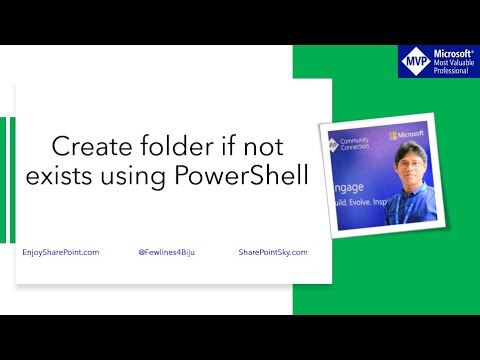
Found 28 images related to powershell create folder if not exist theme
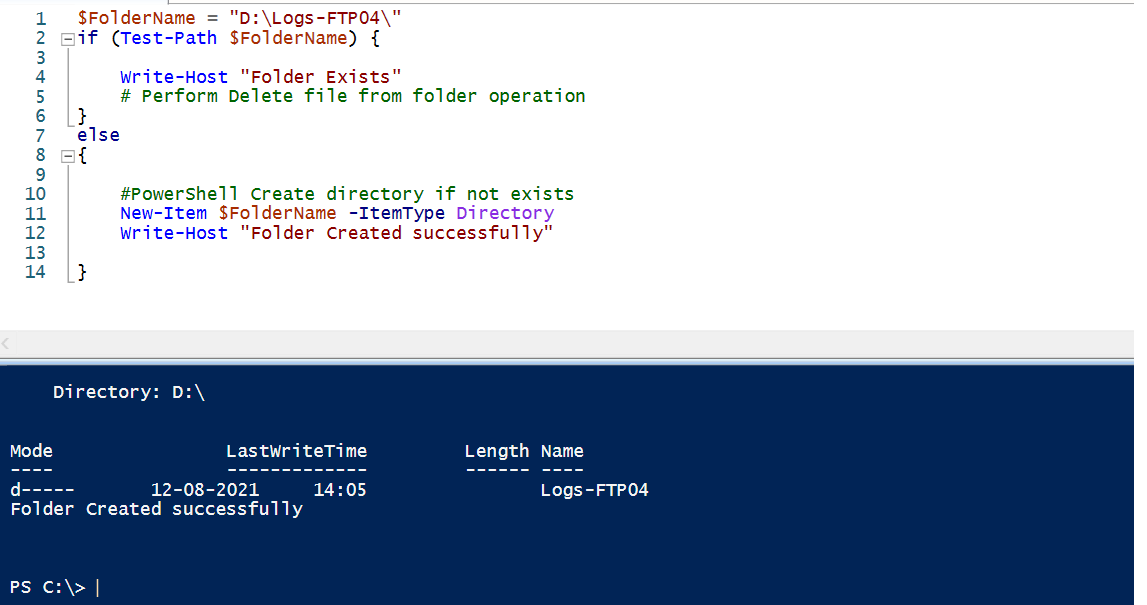


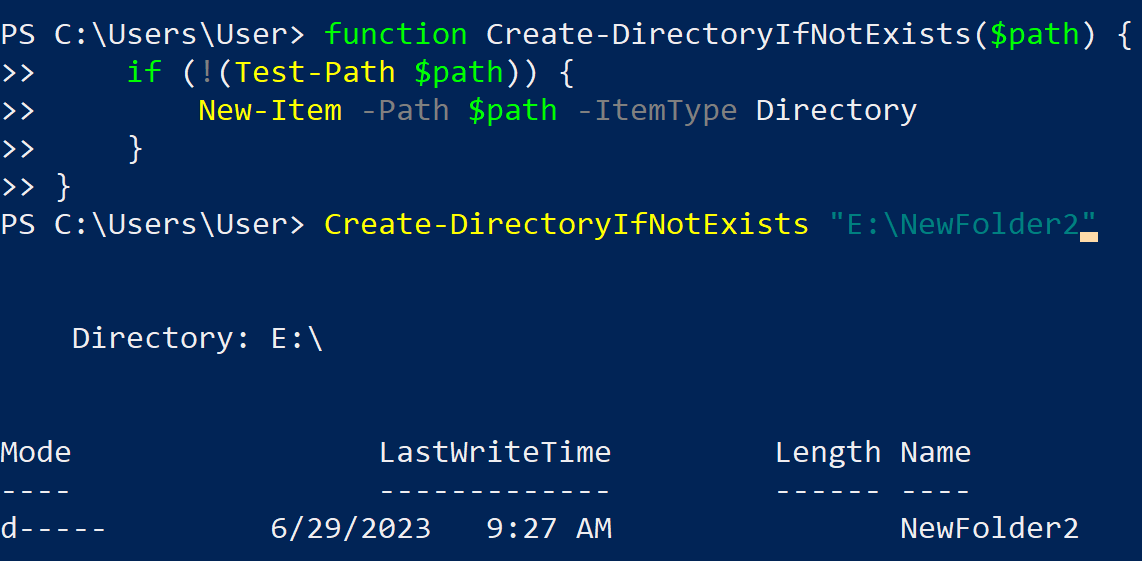


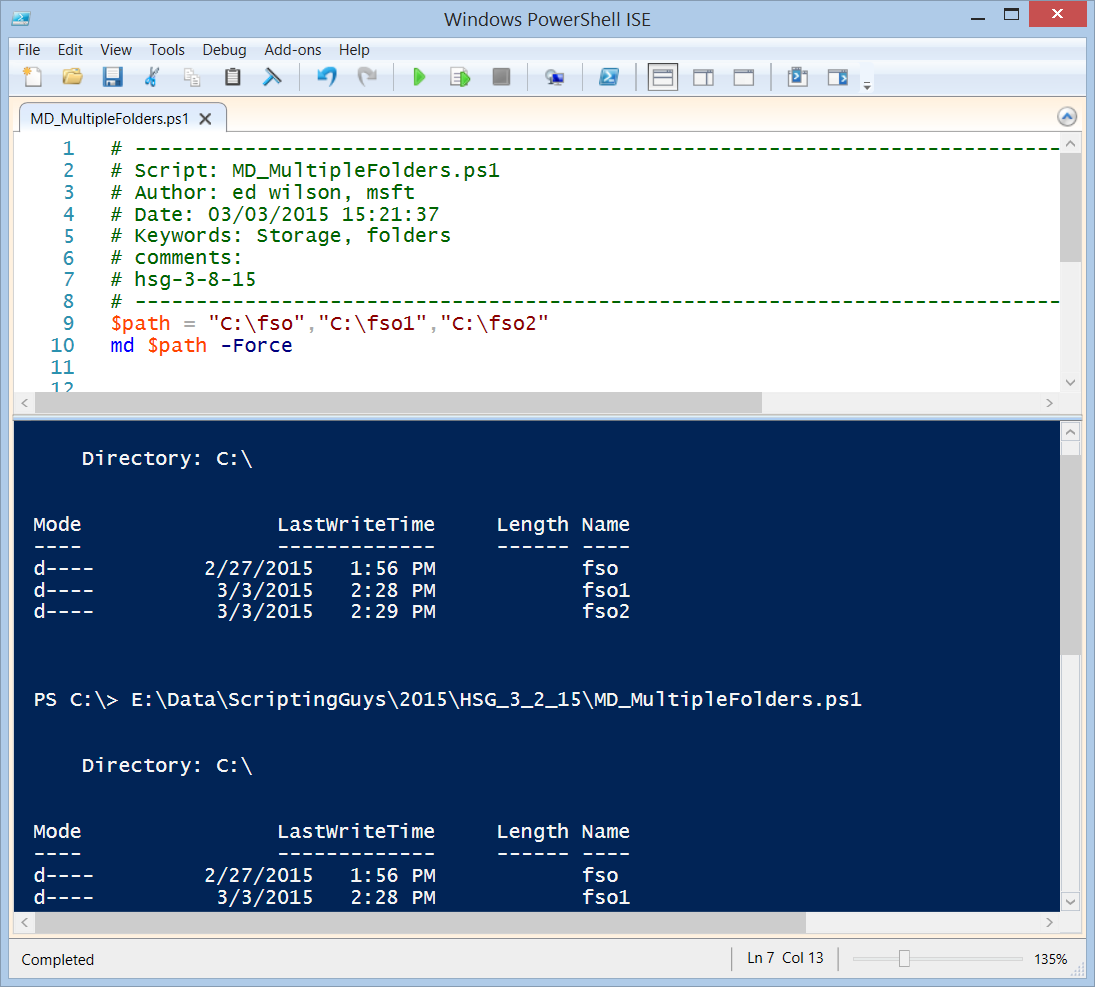




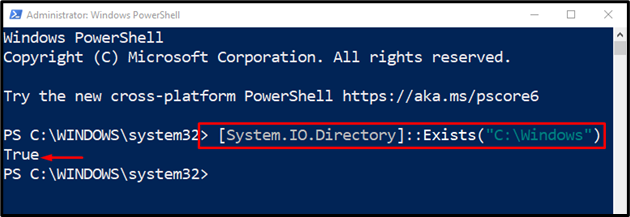

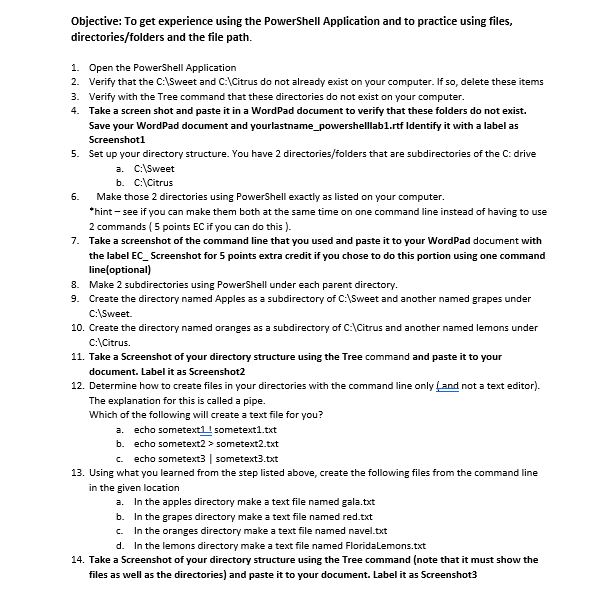





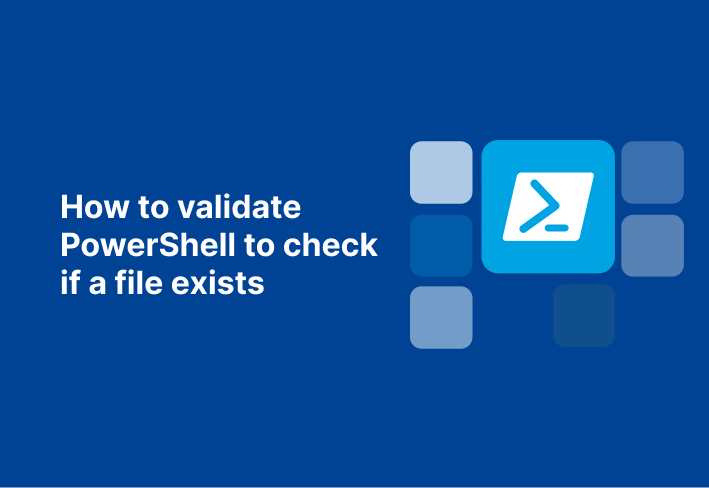


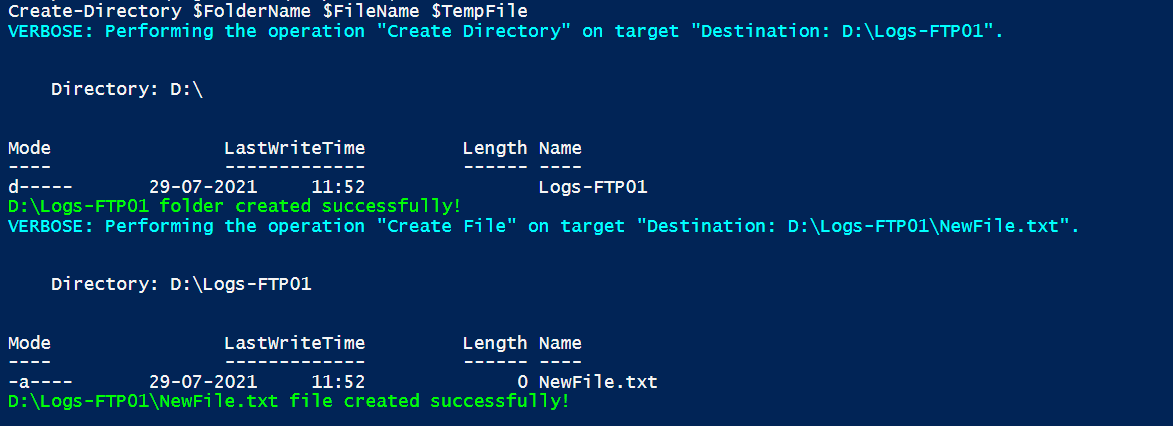


![FIX] The Specified Directory Service Attribute or Value Does Not Exist Fix] The Specified Directory Service Attribute Or Value Does Not Exist](https://www.techinpost.com/wp-content/uploads/rtaImage-1.png)
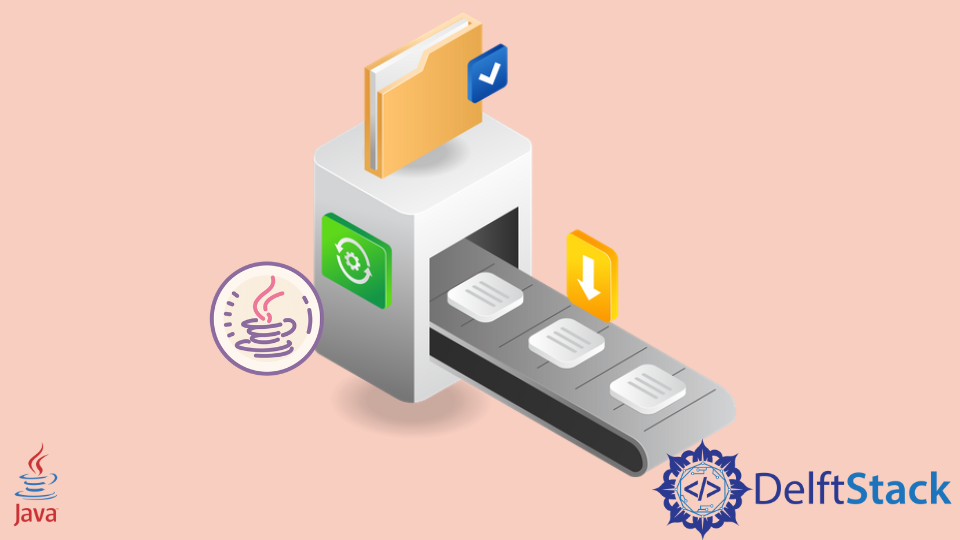
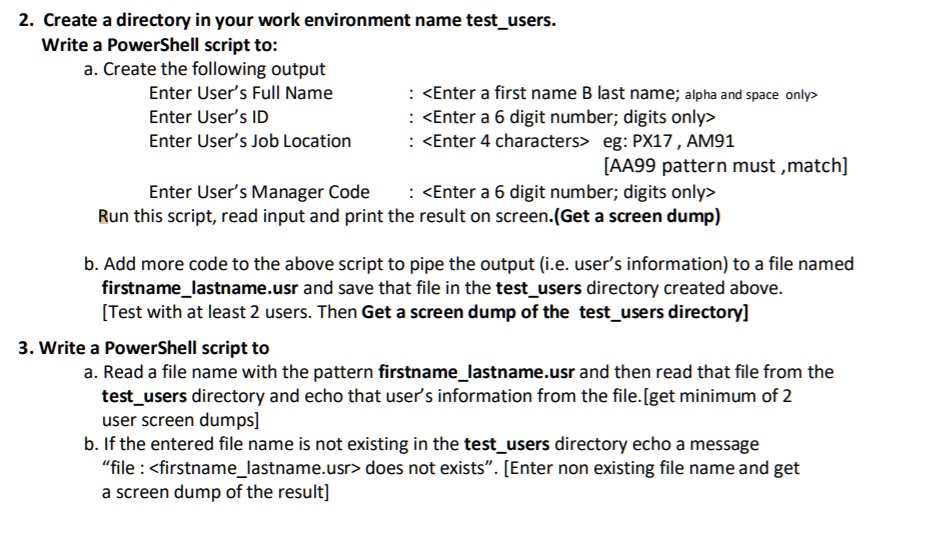








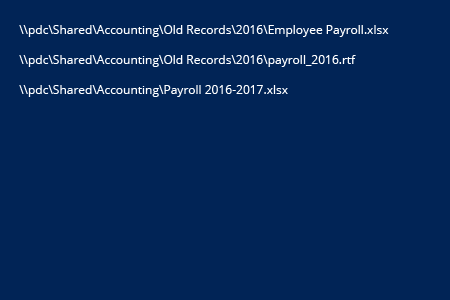





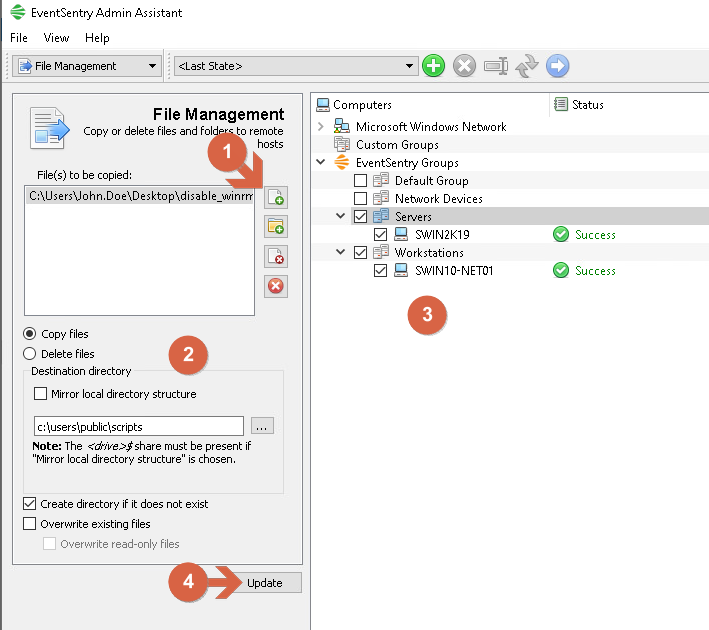







Article link: powershell create folder if not exist.
Learn more about the topic powershell create folder if not exist.
- PowerShell – Create Directory If Not Exists – ShellGeek
- Create directory if it does not exist – Stack Overflow
- Create Folder If Not Exist in PowerShell [3 ways] – Java2Blog
- Create Folder If Not Exists in PowerShell – MSSQL DBA Blog
- PowerShell – Create a folder if not exists or Create a directory …
- Create a directory if it does not exist and then create the files in that …
- Check if Folder Exists in PowerShell [5 Ways] – Java2Blog
- Powershell Create Directory If Not Exist: A Detailed Guide
- Using PowerShell create a folder if not exists – in 2 proven steps
- Script to create a new folder if it doesn’t exist on Windows 10
See more: nhanvietluanvan.com/luat-hoc